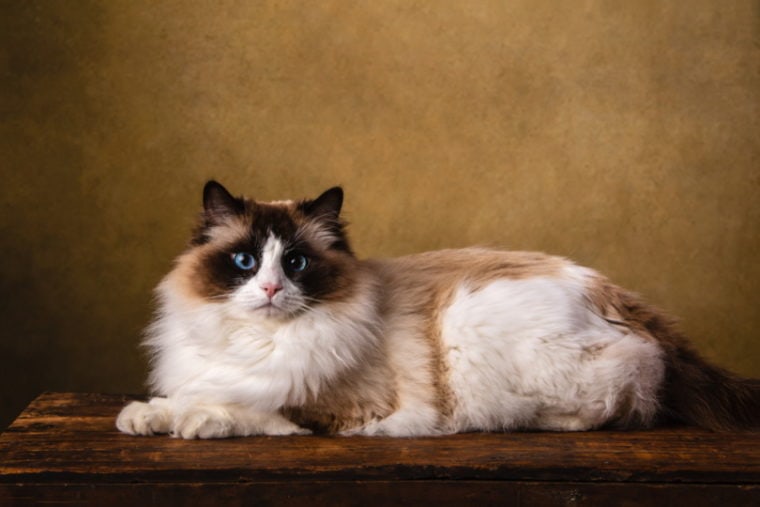
What’s not to love about a Ragdoll cat? They’re sweet-natured and adorable, and the coat color possibilities are endless. Ragdoll cats are pointed on the face, ears, feet, and tail, and, though there are only six main point colors, coat types including lynx and tortie can be thrown into the mix, making Ragdolls very diverse color-wise.
The 20 Ragdoll Cat Color Variations
If you’re new to Ragdolls, it can also be quite confusing trying to figure out what terms like “mottled” and “lynx” mean. In this guide, we’ll introduce you to the six main coat colors and the 14 other possible color combinations. We’ll also include information on the four possible Ragdoll coat patterns. Click the links below to jump ahead:
The 6 Ragdoll Point Colors
1. Seal Point
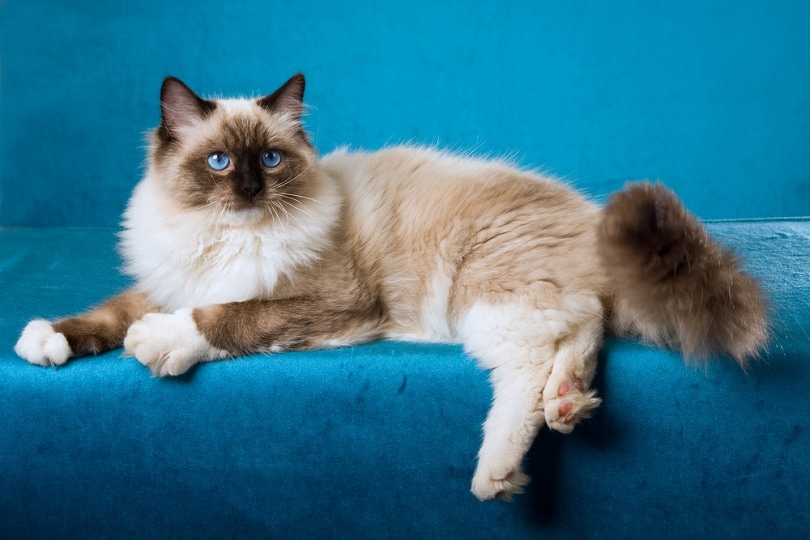
Seal point is one of the six main Ragdoll point colors. It describes Ragdolls with deep, dark brown color points contrasted nicely against the rest of the coat, which is a fawn/cream color. The nose and paw pads should also be seal colored. Like all other Ragdoll colors, cats with seal points have blue eyes.
2. Chocolate Point
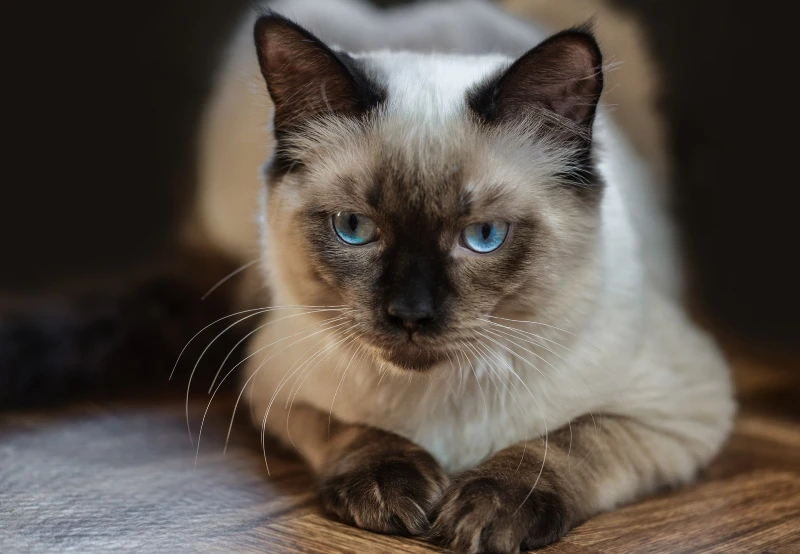
Chocolate-pointed cats are sometimes mistaken for being seal points (guilty—one of our cats is a seal-point Siamese that we believed for years to be chocolate!). The difference is that chocolate is a lighter, warmer brown shade, and cats with this coloration will have lighter base coats than seal points, too.
The chocolate point base coat is more of an ivory color, which gets lighter toward the stomach. The nose and paw pads have a pinkish tone.
3. Blue Point
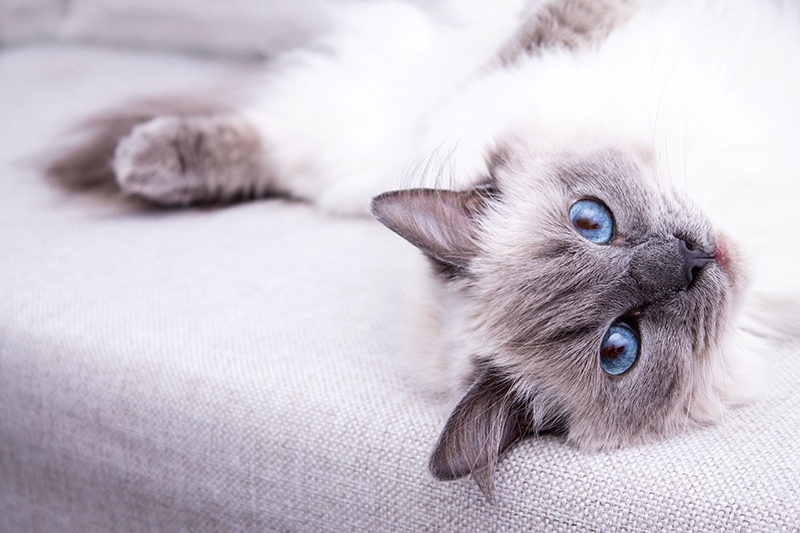
Blue-pointed Ragdolls have deep blue (a sort of grey tone) points and a body with a silvery blue-white tone. Like seal points and chocolate points, body shading lightens around the stomach and chest. In blue points, the stomach and chest are white-shaded. The nose and paw pads are slate colored.
4. Red Point
Ragdolls with red points display a reddish/orange shade best described as “apricot” on their ears, faces, paws, and tails. The Cat Fanciers’ Association prefers deeper shades of red. The rest of the coat is white and free of red/orange/apricot shading. The nose and paw pads are a medium pink shade.
5. Lilac Point
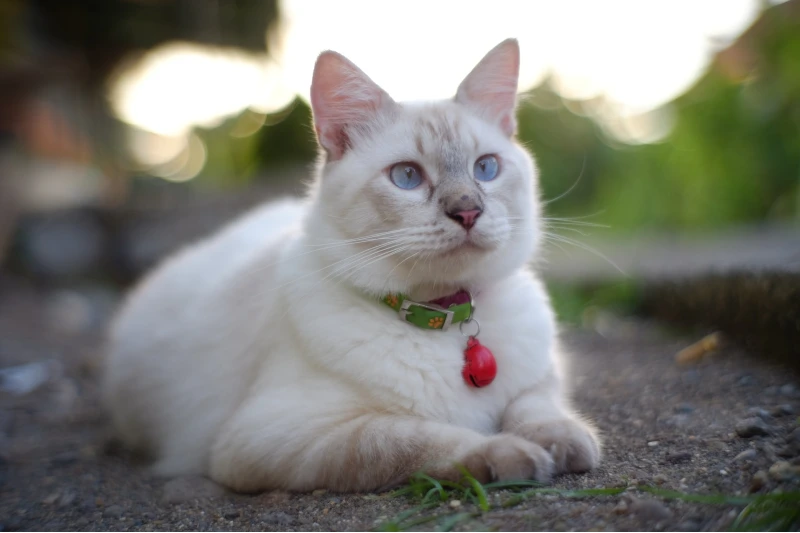
Ragdolls with lilac coloration are best described as having grey points with a very slight pinkish tint. The base coat is white, and the nose and paw pads are somewhere between a pink and lavender color.
6. Cream Point
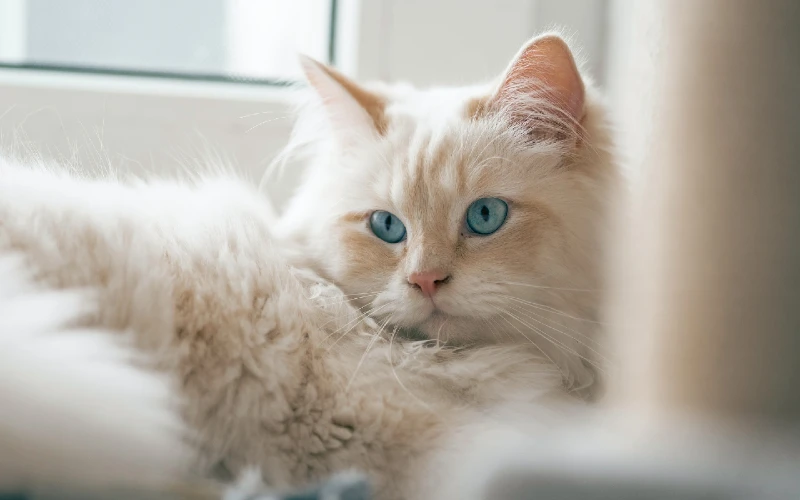
Cream point Ragdolls have points with a mild buff-pink cream color. With the white body, the pale points appear somewhat less distinctive than those of Ragdolls with other paint colors. The nose and paw pads are similar in color to those of red-pointed Ragdolls, taking on a medium pink or coral shade.
The 6 Lynx Ragdoll Colors
1. Seal Lynx Point
Lynx is a pattern of bars on the points, which gives a stripy effect. Seal lynx point Ragdolls have dark, bold brown bars on their points and the base coat color ranges from cream to fawn. Stripes and ticks are possible shading types on the body.
The stomach and chest are lighter, as with standard seal points, and the ears and paws are seal-colored (ears with a paler center). The nose can be seal brown or seal brown-rimmed with a pink center.
2. Chocolate Lynx Point
Like the standard chocolate point, the chocolate lynx point Ragdoll has an ivory-colored base coat with some stripes or ticks possible. The bars are chocolate-colored, as are the ears (again, with a pale center). The nose can either be cinnamon-colored or pink with cinnamon edging and the paws are a cinnamon color.
3. Blue Lynx Point
Blue lynx Ragdolls have dark grey/blue bars and a cold, silver-white colored body with stripes or ticks possible. The ears are the same color as the bars with a pale middle. The nose can be slate-colored like the paws or pink with a slate-colored border.
4. Red Lynx Point
The red lynx point has deep flame-colored bars on their points, which lay against a white body with possible striping or ticking. The ears are the same color as the points and the center is pale. The nose and paw pads are a pink, fleshy shade.
5. Lilac Lynx Point
Ragdolls with lilac lynx points have points in a greyish-pink (very slight) hue with identically-colored ears with paler middles. The body is icy white with possible ticking or striping. The nose is between pink and lavender but may have pink-lavender edging around a light pink tone and the paw pads are pink-lavender.
6. Cream Lynx Point
The cream lynx point Ragdoll has a white body (striping or ticking possible) with light buff or pink bars on the points—the same color as on the ears. Again, as with standard cream points, the points are very pale in color and appear to blend in pretty well. The nose and paw pads are medium pink or coral.
 The 4 Tortie Ragdoll Colors
The 4 Tortie Ragdoll Colors
1. Seal-Tortie Point
The seal-tortie has the standard seal brown points with red and/or cream mottling, which gives off a sort of marbled effect. The nose and paw pads are also sealed in color, but a fleshy or coral pink mottled effect in these areas is preferred by the CFA.
2. Chocolate-Tortie Point
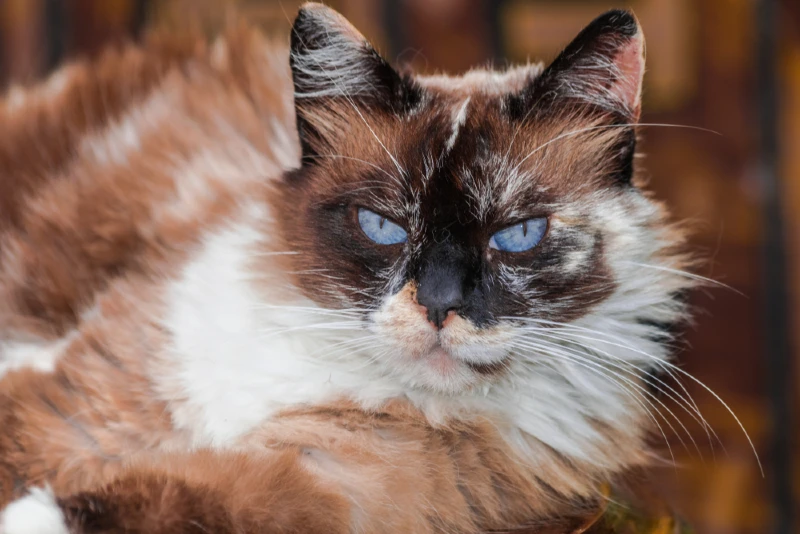
As with other tortie point Ragdolls, chocolate-tortie points have mottling on their points—in this case in a red and/or cream shade. Like seal-tortie points, the nose and paw pads are preferred in a mottled medium pink/fleshy color. The base nose color is cinnamon.
3. Blue-Cream Point
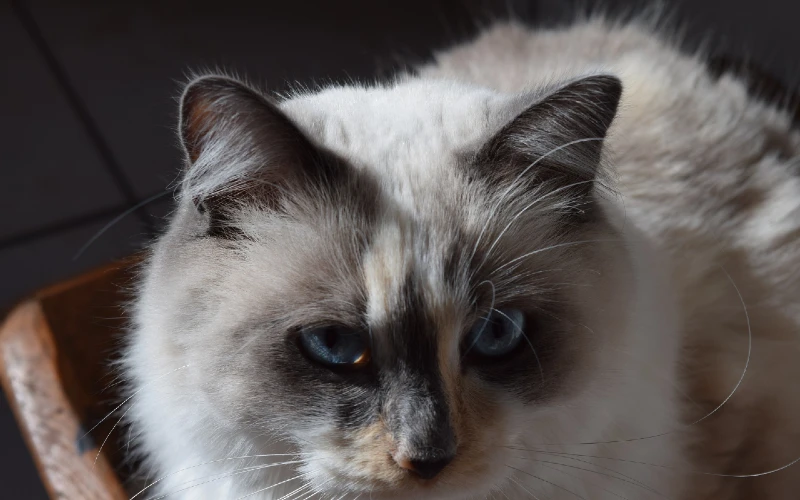
Blue-pointed Ragdolls with mottling on the points are not referred to as “tortie points” and are instead called “blue-cream”. The blue/grey points have cream-colored mottling, and the body may take on a mottled effect as the cat ages. The nose and paw pads are slate-colored and mottling in medium-pink/a fleshy tone is preferred.
4. Lilac-Cream Point
Lilac-cream points are icy grey with a very mild pink tint with pale cream mottling. If the body is mottled, it will be the same color as the points. The nose and paw pads are between lavender and pink in tone and medium-pink/fleshy mottling is preferred.
The 4 Tortie-Lynx Colors
1. Seal-Tortie Lynx Point
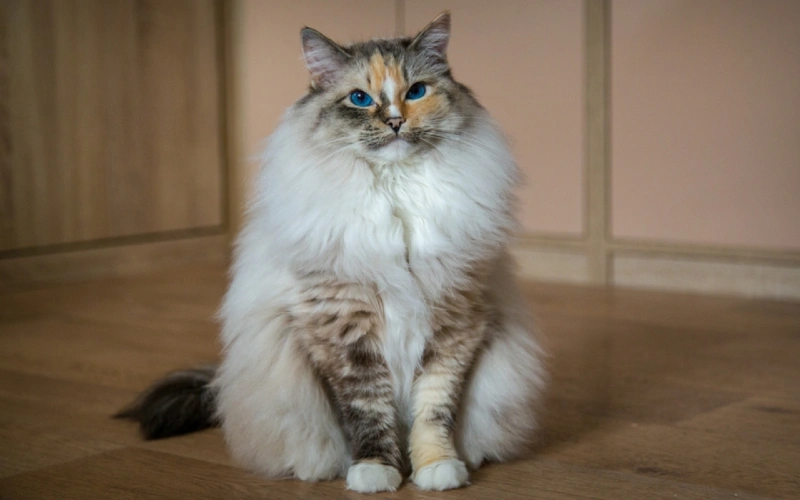
If you thought Ragdoll coat types couldn’t get any more confusing, welcome the seal-tortie lynx point (and the various other tortie-lynx varieties)! Like standard lynx points, seal-tortie lynx points have dark brown bars but with a red and/or cream mottled overlay on these markings.
The nose is preferred pink rimmed with seal brown and medium-pink mottling is possible. The paw pads can also be mottled in the same way. The body can be shaded with stripes, ticking, and mottling. According to the CFA, tortie-lynx point Ragdolls (all types—not just seal-tortie) look more like lynx point Ragdolls than tortie points.
2. Chocolate-Tortie Lynx Point
The chocolate-tortie lynx point has an ivory-colored body with possible striping, ticking, or mottling. The points with chocolate-colored bars are overlaid with red and/or cream mottling. The nose is preferred to have a cinnamon edge with pink in the center and mottling is also possible. The paw pads are cinnamon or cinnamon with a fleshy/medium-pink mottled effect.
3. Blue-Cream Lynx Point
Blue-cream lynx point Ragdolls may have stripes or ticks on their silvery grey bodies. The blue/grey bars on the points are overlaid with cream mottling. The nose and paw pads are slate-colored, though a slate-edged pink nose is preferred. Medium-pink/fleshy mottling may be present on the paws.
4. Lilac-Cream Lynx Point

Striping or ticking is possible on the icy white base coat, as is cream-colored mottling. The grey bars with a slight pink tint can be overlaid with cream mottling. A lavender-pink edging around the nose is desirable and fleshy/medium-pink mottling is possible, as is the case with the paw pads.
Ragdoll Coat Patterns
In addition to various coat colors, Ragdolls can come in four coat pattern varieties.
Final Thoughts
There’s no doubt about it—the world of Ragdoll colors and patterns is vast and sometimes downright confusing. So, if the Ragdoll cat you’re considering bringing into your home is described in fancy cat jargon like “seal tortie-point” or “lilac-cream lynx point”, we hope our guide has been of some assistance to you.
See also:
Featured Image Credit: Angela Kotsell, Shutterstock






